Last updated on May 27th, 2025 at 02:54 pm
It can take several hours of game play to learn the mechanics of some games, even longer for the more complex games. If subject matter learning can occur only after this initial game

It can take several hours of game play to learn the mechanics of some games
Assignment:
It can take several hours of game play to learn the mechanics of some games, even longer for the more complex games. If subject matter learning can occur only after this initial game mechanic learning has taken place, educators need to justify the amount of time a learner spends in the game environment. User interaction is important in this type of learning and evaluation of success might be measured by user knowledge enhancement and be able to use that new knowledge in real-life situations.
For this assignment, create a PowerPoint® or Prezi® presentation covering this content:
Design an educational simulation scenario incorporating the use of an electronic health record (EHR) and answer the following questions:
- Title Slide (1 slide)
- Which informatics competencies would you focus on and why? (2 slides)
- What strategies will you use to encourage user engagement and interaction with the simulation? (2 slides)
- What strategies will you use to measure user knowledge engagement from interaction with the simulation? (2 slides)
- How can virtual reality, simulations, and real-life scenarios be designed to provide optimal education? (2 slides)
- How might available resources and technology differ in an urban environment versus a rural environment? (2 slides)
- How might virtual reality, simulations, and real-life scenarios be integrated into the nursing school curriculum to increase patient, practitioner, and hospital safety?
- References Slide (1 Slide)
An example of a quality presentation is located in the Resources tab and make certain to include an audio explanation and detailed speaker notes on all content slides, and use at least 5 references. include pictures
Expert Answer and Explanation
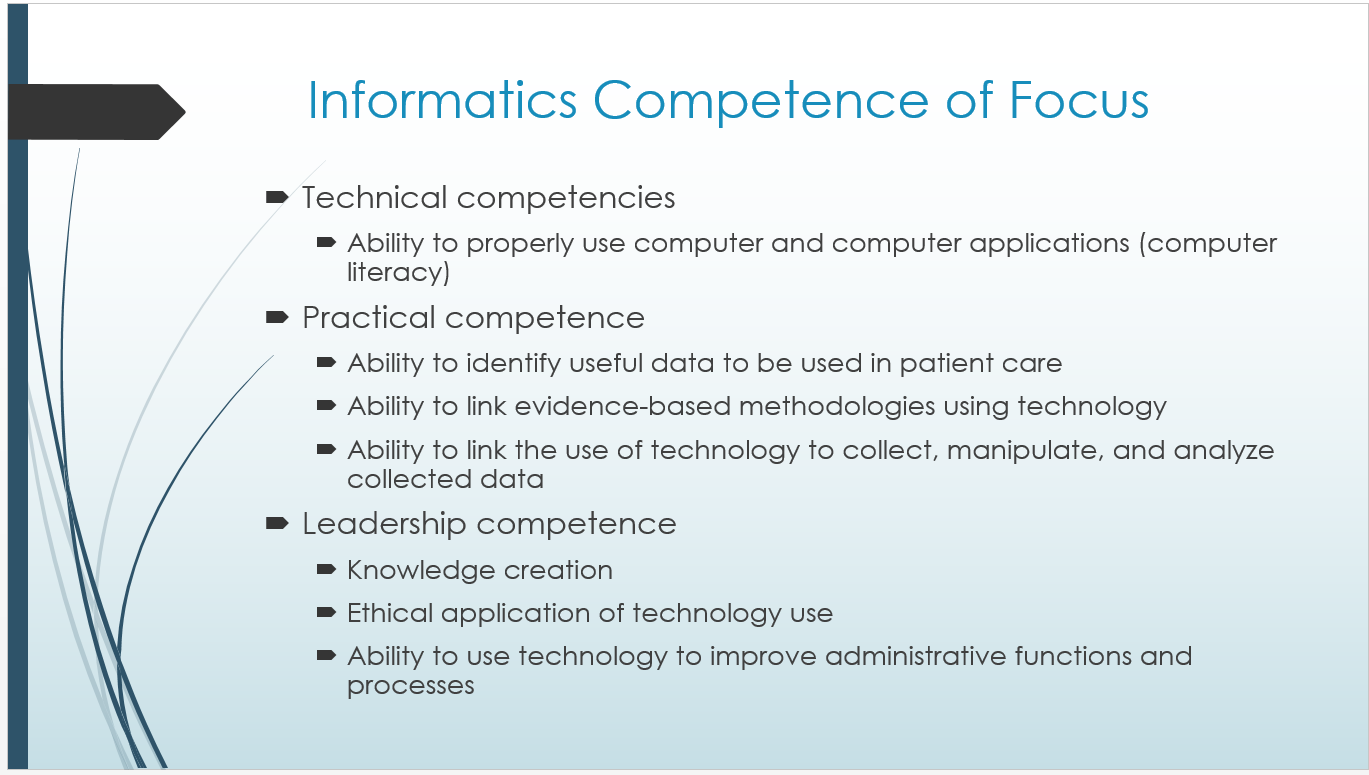
When developing an HER educational scenario, some of the competencies that I would focus on include technical competencies which include the ability to properly use the computer (computer literacy) and knowledge of how to use different computer applications. According to Strudwick et al. (2019), for a nurse to properly apply informatics including the use of EHR system, they should at least posses the skills required to have a simple understanding of the computer and its application.
Another important competence is listed as practical competence. Practical competence involves the ability to apply the EHR system into nursing practice. Some of the skills involved in development of practical competence include the ability to identify useful data to be used in patient care, ability to link evidence-based methodologies using EHR system, including collection, manipulation, and analysis of collected data
The last competence is the leadership competence which develops the skills of the users to apply the EHR system in a leadership role. The leadership competence will focus on the ability to create new knowledge using the EHR system, ethical application of technology use, which is considered an important element, more so protection of patient data (Kiel, Ciamacco & Steines, 2016) and finally the ability to use technology to improve administrative functions and processes.
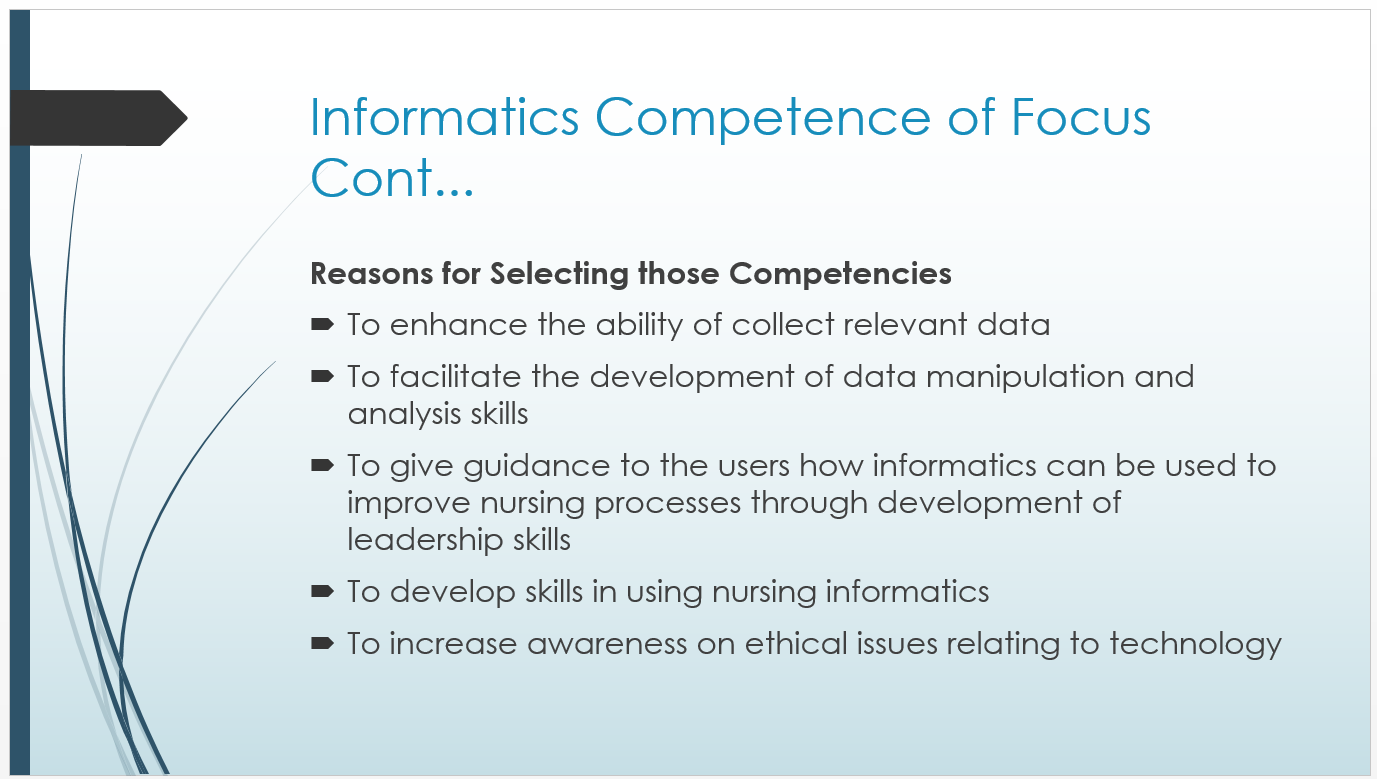
The reasons for selecting the listed competencies is first to enhance the ability of the users to collect relevant research data using the EHR system. Another reason is to facilitate the development of data manipulation and analysis skills with the intention of improving patient outcomes. The competencies will also give guidance to the users on how informatics can be used to improve nursing processes through development of leadership skills. Similarly, the competencies selected will assist in the development of skills in using nursing informatics. The selected competencies will also increase the awareness on some of the ethical issues relating to technology use in health care.
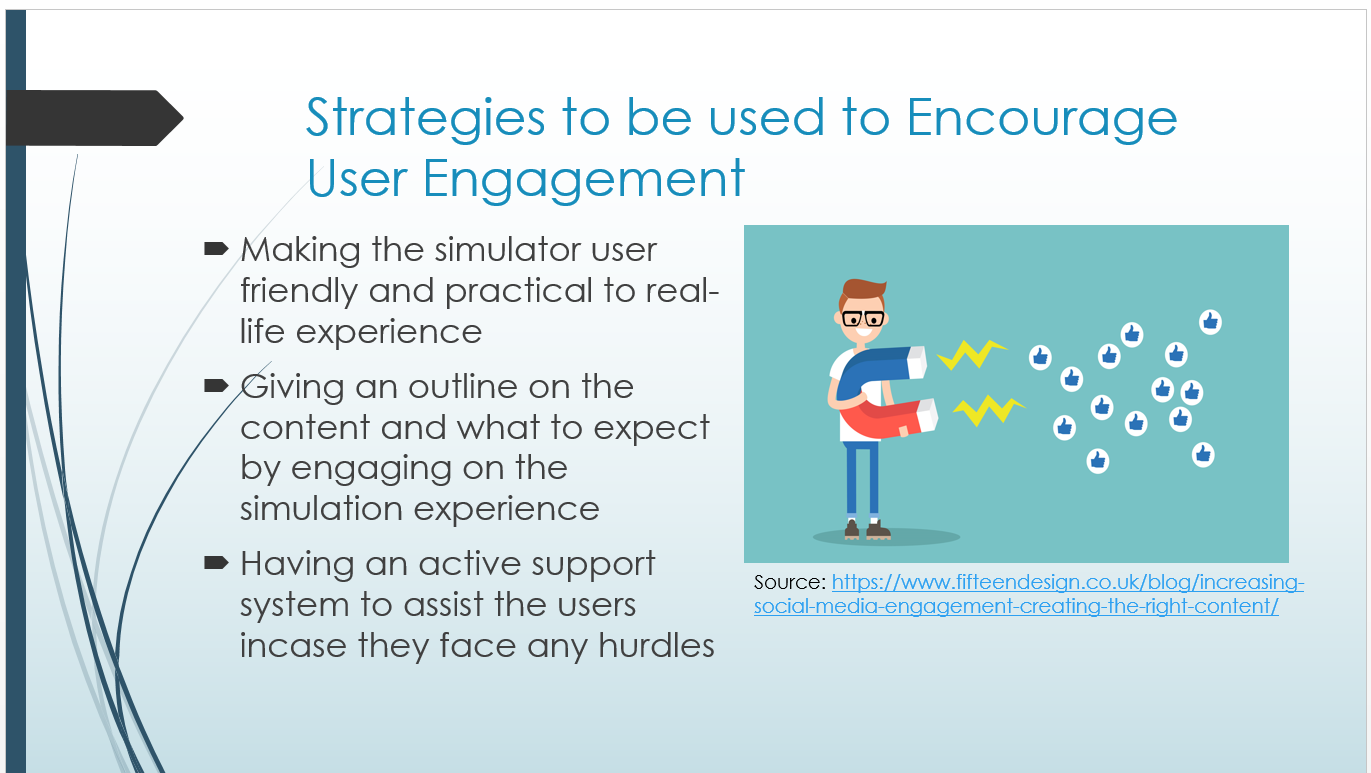
Some of the strategies that can be used to encourage user engagement for the developed simulator include making the design of the simulator to be user friendly, easy to interact with and practical (Ryan et al., 2017). Another strategy is by giving an outline to the users on what to expect and what content is provided by the simulation experience. This will indicate to the users whether they will be getting value for engaging in the experience. Another strategy is by having an active support system that promptly responds to user queries.
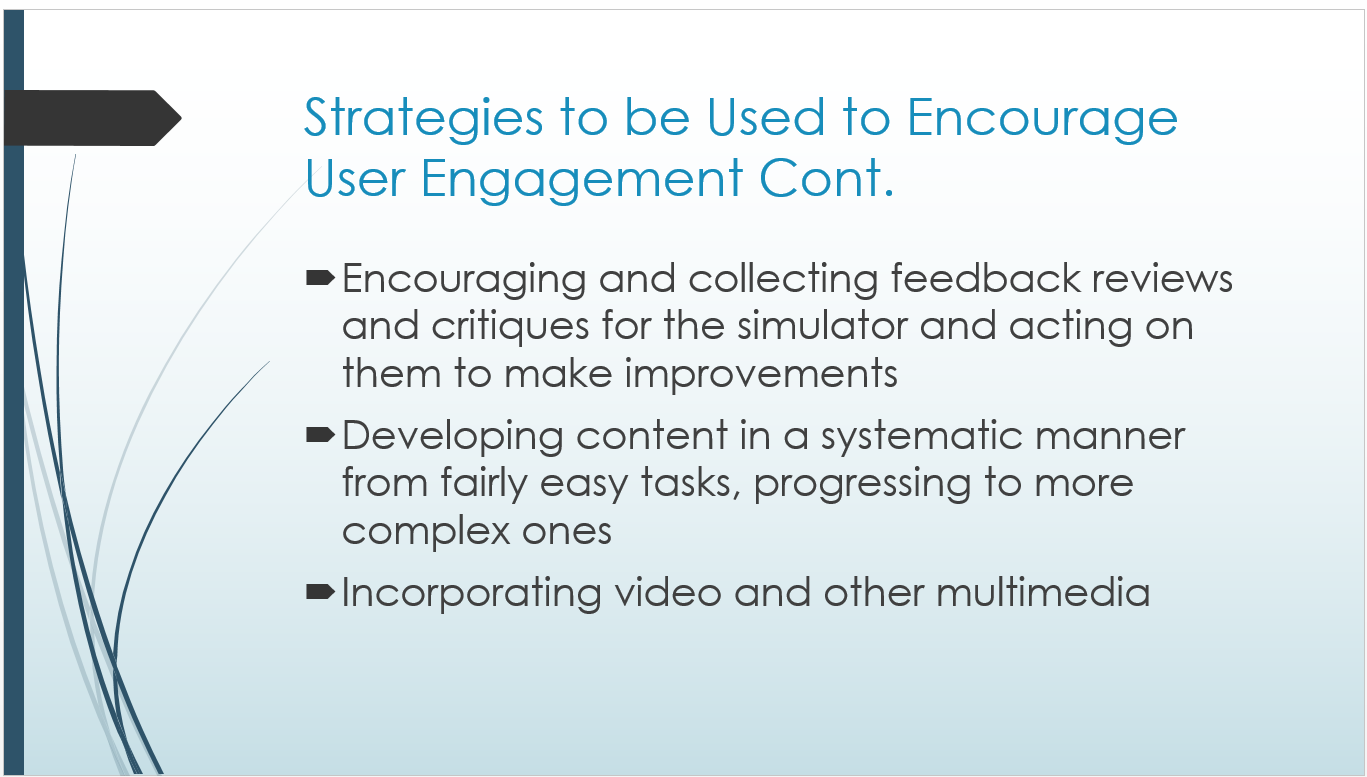
According to Ryan et al. (2017), one of the factors that encourages engagement is creation of a web based critique and feedback platform where users can share their experiences, support and offer recommendation for improvements. Developing content in a systematic manner from fairly easy to complex tasks can also enhance user engagement with the simulator. Another strategy to encourage engagement is by incorporating video and other multimedia support in the simulator.
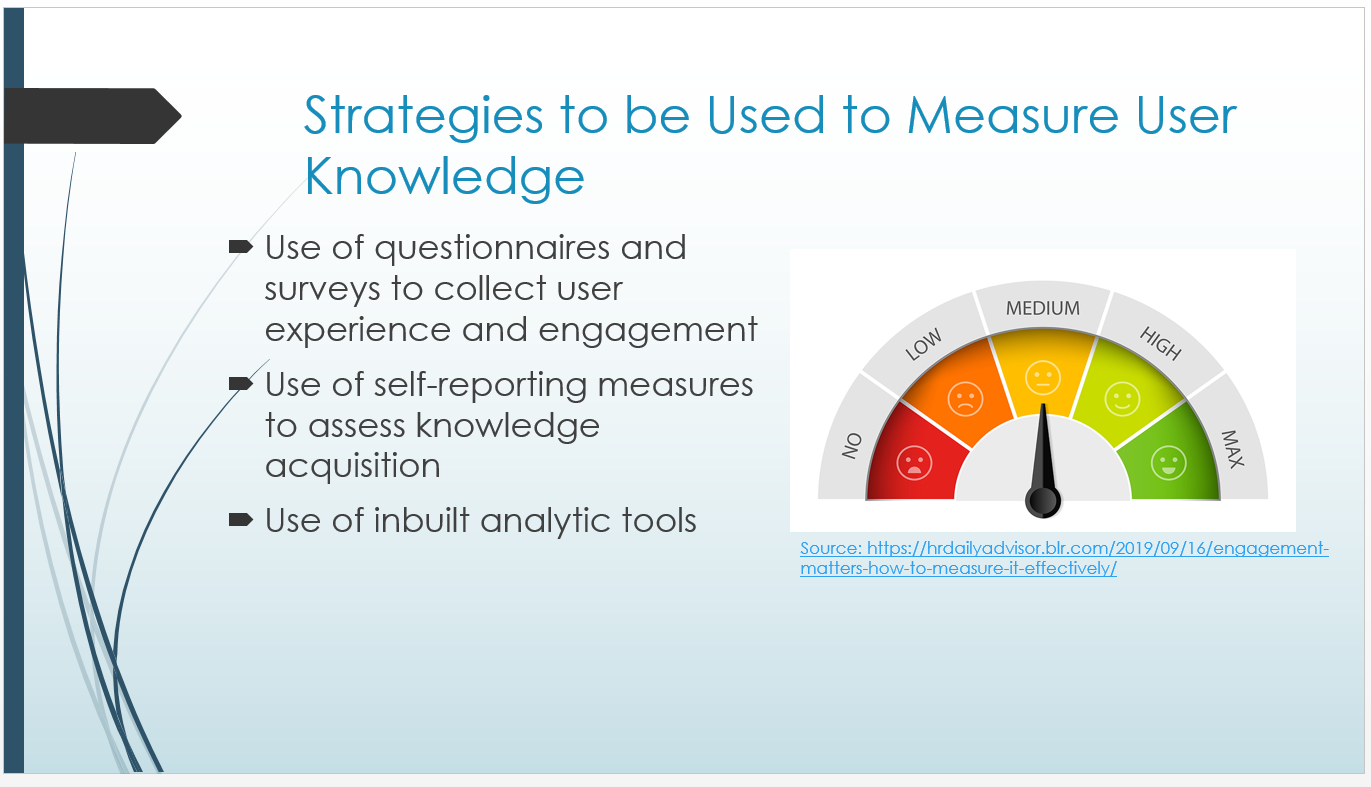
Having a measurement strategy to assess knowledge engagement of uses in simulations, virtual reality and real life experience is key in meeting the intended objectives of the learning experience. One of assessment strategies to assess knowledge engagement is by collecting user feedback on their experience and engagement using questionnaires and surveys. Another strategy is by using self-reporting measures, for example, progress tracking reports to assess the level of knowledge acquisition of the users. Some simulators also have inbuilt analytic tools that will automatically measure the level of knowledge engagement of the users.
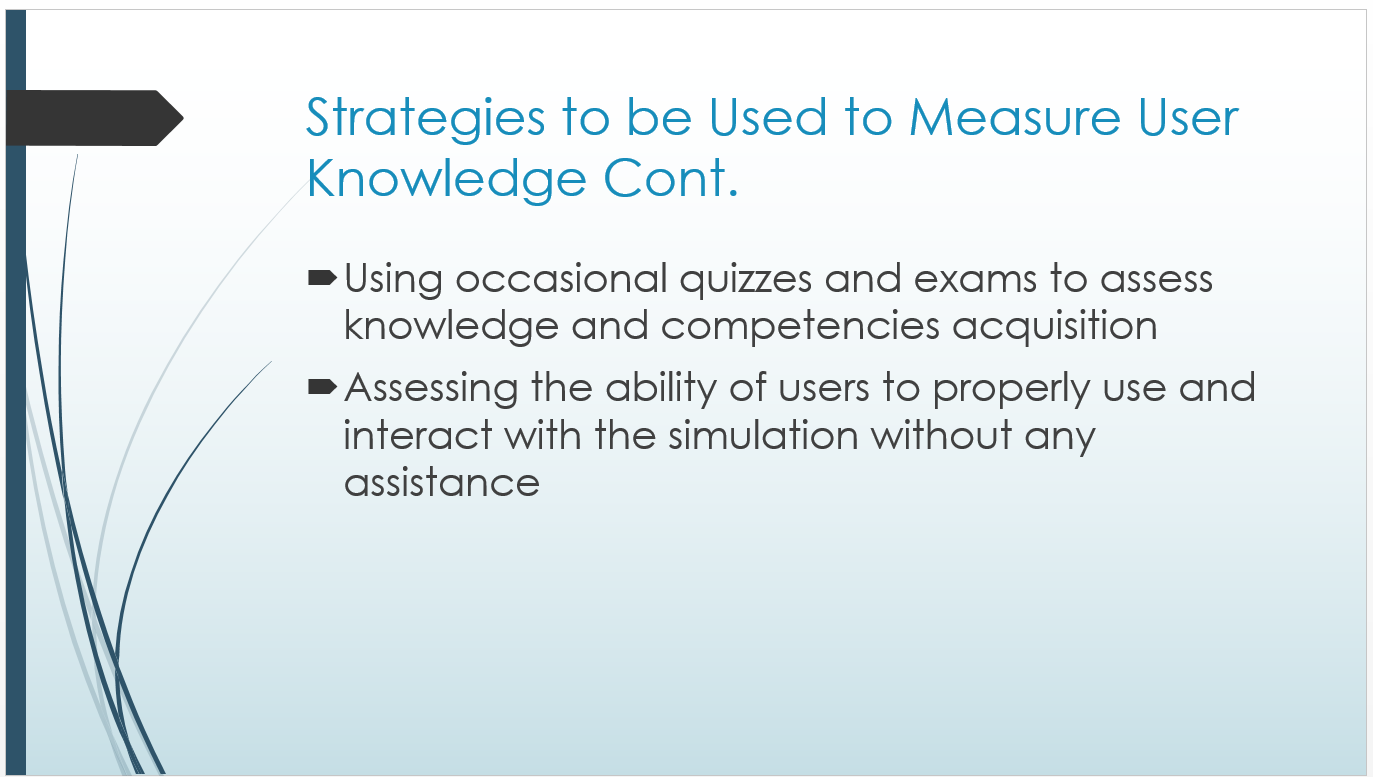
Another strategy is the use of occasional quizzes and exams to assess knowledge and competency acquisition from the learners. Assessing the ability of users to properly use and interact with the simulation without any assistance can also be used as an assessment strategy.

Virtual reality and simulations can also be used to provide and promote optimal education in nursing. Some of the ways it can do so is by factoring in features that promote collaboration between teachers and students which is an essential aspect in knowledge transfer. Another way optimal education can be promoted is by including practical content that students can easily relate to and apply in real-life practice. Making VR and simulation tools easy to use, interactive, and user friendly can also facilitate knowledge transfer and learning experience, thus, promoting optimal education (Miles, 2018). Similarly, including assessment tools to evaluate knowledge acquisition and competency development by the learners can be a way to promote optimal education

Other than the listed aspect, VR and simulation tools can also optimize education by providing support tools like multimedia content to facilitate the learning process. Providing updated evidence-based content and structuring the platforms to be responsive to learners’ needs can also promote optimal education.
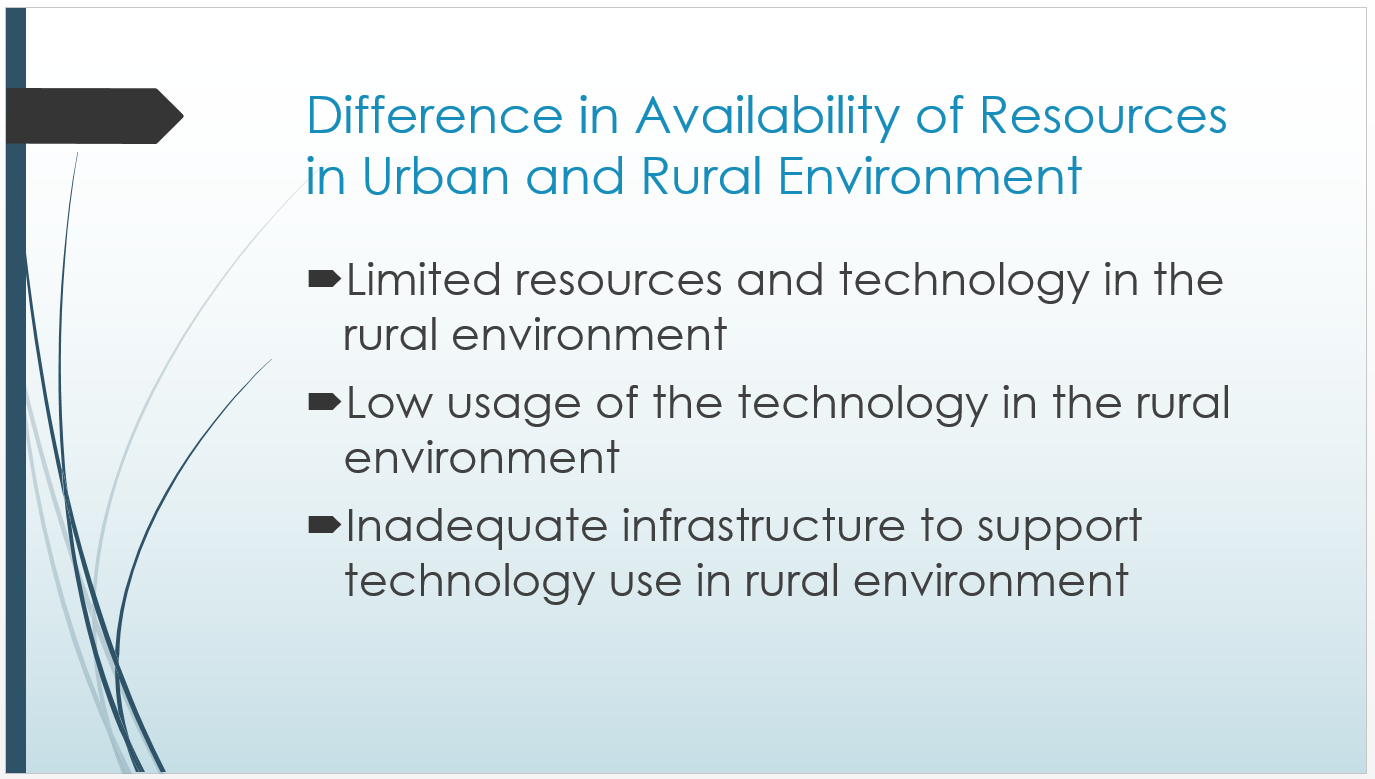
With increased application of available resources and technology, there is still some disparities with regards to the application in urban and rural environment (Mack et al., 2016). In rural environment the availability of resources and technology is still scare as compared to the urban environment. This further leads to the low usage of technology in health care in rural areas as reported by Mack et al. (2016). One of the contributing factors to the limited application of technology is poor or inadequate infrastructure to support technology use in rural environment,
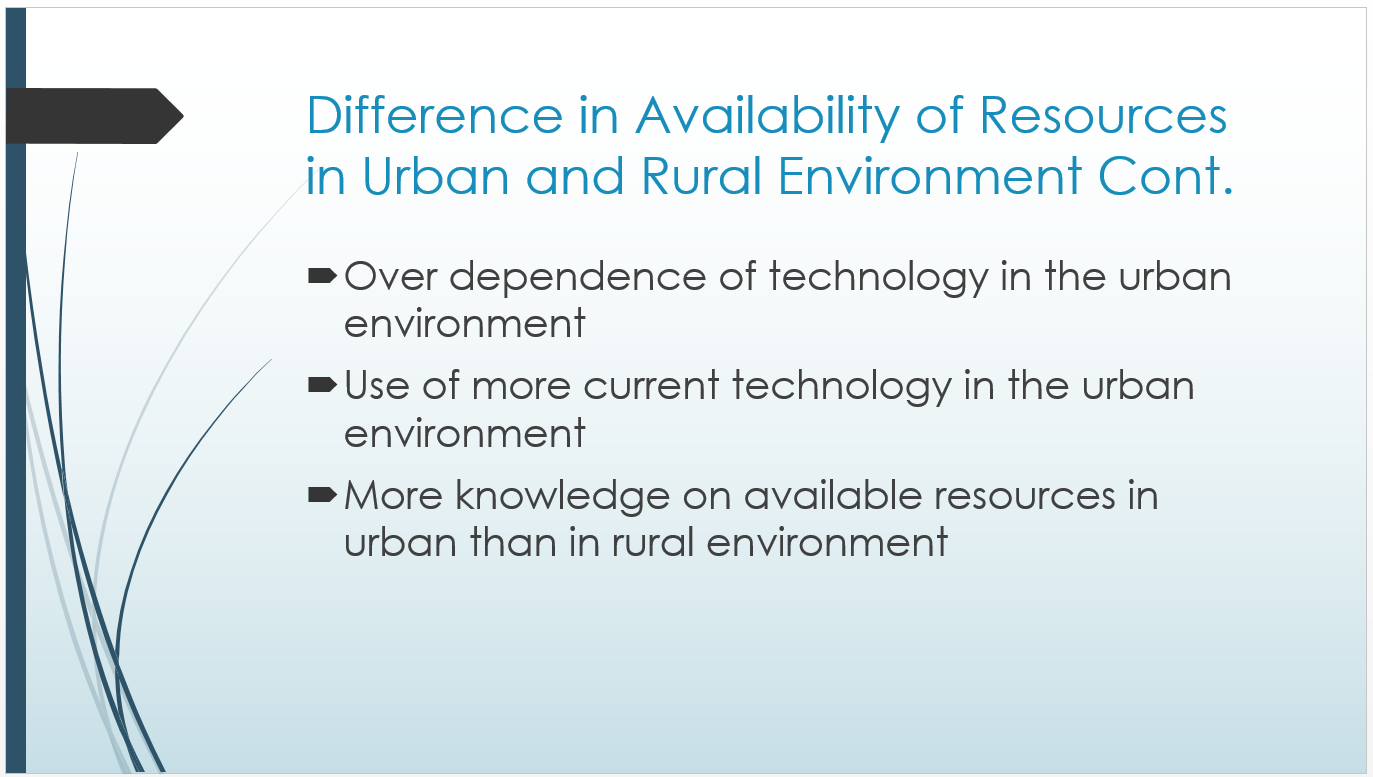
In urban areas, cases of overdependence of technology is more rampant and compared to the rural environment. The urban environment due to availability of resources has more current technology than in rural environment. The urban environment is also characterized by more awareness on available resources and technology application than in rural environment, which is also a factor the contributes to the variance of usage of those resources and technology in the two environments (Maulik et al., 2017).
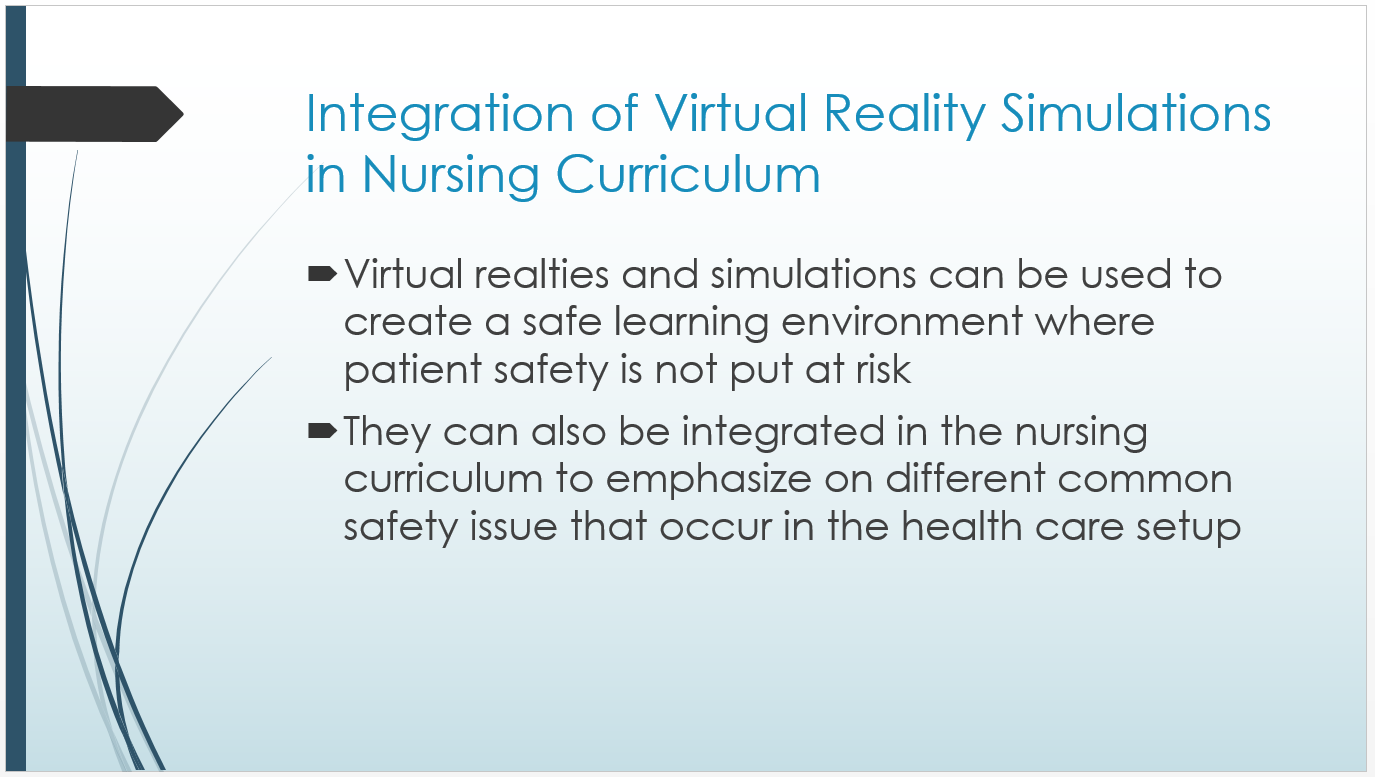
The adoption of VR, simulators and real-life experience in nursing curriculum can be used to promote health care safety and improve patient outcomes. One of the ways they can do so is by providing a safe learning environment where knowledge can be transferred freely without compromising patients’ safety (Miles, 2018). Including these tools in the nursing curriculum can also be used to emphasize on different common safety issues that occur in the health care setup which will assist learning nurses when they transition to nursing practice.

Integrating these learning tools in nursing curriculum can also facilitate knowledge acquisition and development of competencies that will enhance patient and hospital safety. Similarly, the learning tools can also highlight possible avenues where interprofessional collaboration can be used to enhance patient and hospital safety.
References
´Kiel, J. M., Ciamacco, F. A., & Steines, B. T. (2016). Privacy and data security: HIPAA and HITECH. In Healthcare information management systems (pp. 437-449). Springer, Cham. https://doi.org/10.1007/978-3-319-20765-0_25
´Mack, D., Zhang, S., Douglas, M., Sow, C., Strothers, H., & Rust, G. (2016). Disparities in Primary Care EHR Adoption Rates. Journal of health care for the poor and underserved, 27(1), 327–338. https://doi.org/10.1353/hpu.2016.0016
´Maulik, P. K., Kallakuri, S., Devarapalli, S., Vadlamani, V. K., Jha, V., & Patel, A. (2017). Increasing use of mental health services in remote areas using mobile technology: a pre-post evaluation of the SMART Mental Health project in rural India. Journal of global health, 7(1), 010408. https://doi.org/10.7189/jogh.07.010408
´Miles, D. A. (2018). Simulation learning and transfer in undergraduate nursing education: a grounded theory study. Journal of Nursing Education, 57(6), 347-353. https://doi.org/10.3928/01484834-20180522-05
´Ryan, C., Roy, S., O’Neill, B., Simes, T., Lapkin, S. & Riva, E. (2017). Designing simulation learning experiences to reduce technological burden on nursing academics: A discussion paper. Australian Journal of Advanced Nursing, 35 (2), 6-11. Retrieved from: https://ro.uow.edu.au/smhpapers/5157/
´Strudwick, G., Nagle, L. M., Morgan, A., Kennedy, M. A., Currie, L. M., Lo, B., & White, P. (2019). Adapting and validating informatics competencies for senior nurse leaders in the Canadian context: Results of a Delphi study. International journal of medical informatics, 129, 211–218. https://doi.org/10.1016/j.ijmedinf.2019.06.012
Place your order now for a similar assignment and get fast, cheap and best quality work written by our expert level assignment writers. Use Coupon: NEW30 to Get 30% OFF Your First Order
Use Coupon: NEW30 to Get 30% OFF Your First Order

[ANSWERED] A 58-year-old obese white male presents to ED
SOLVED! Design a list of 10 data elements related to the
SOLVED! Write a brief analysis (no longer than 2 pages)
SOLVED! Patient AO has a history of obesity and has recently
